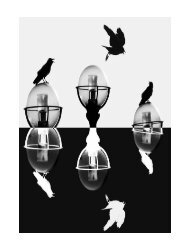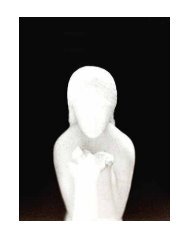Odds and Ends Essays, Blogs, Internet Discussions, Interviews and Miscellany
Collected essays, blogs, internet discussions, interviews and miscellany, from 2005 - 2020
Collected essays, blogs, internet discussions, interviews and miscellany, from 2005 - 2020
Create successful ePaper yourself
Turn your PDF publications into a flip-book with our unique Google optimized e-Paper software.
Rob Stanton’s Response in Jacket to Jeffrey Side’s Article ‘The Dissembling Poet: Seamus Heaney and the
Avant-Garde’.
April 2009
The unswervingly stern and somewhat unfair critique of Seamus Heaney offered by Jeffrey Side and Jamie
McKendrick’s funny (if glib) riposte [in this issue of Jacket] run the risk not only of inspiring pointless ad hominem
mud-slinging (always embarrassing to see, from whatever angle), but also of boiling a potentially interesting debate
down to an oft-rehearsed set of perceived dichotomies-radical vs. conservative, innovative vs. formal, avant-garde
vs. traditional, “raw” vs. “cooked”, even Romantic vs. Classical - that are of limited real use. Instead of two
predictable camps circling their wagons on opposing sides of the same insurmountable mountain and firing off
ineffectual volleys, it is surely worth initiating a more topographical study. To this end, I aim to compare poems here
by Seamus Heaney and J. H. Prynne-one of only two “avant-garde” poets Heaney mentions by name in Side’s
quotation-to see what, if anything, lies beyond their obvious difference.
It is presumptuous to imply, even indirectly, that Seamus Heaney is the closest thing the current British poetry scene
possesses to a genuinely popular artist just because the poetry-buying public is made up of ignorant fools who don’t
know what is good for them. Assuming, then, that there are other reasons, what is it that this audience “gets” from
Heaney’s work? Surely not only, as Side implies, the reinforcement of an essentially conservative worldview, little
epiphanic confirmations of fixed national, social, familial and personal identity bringing us back to “hard realities”.
Heaney’s poetry does indeed abound in such moments of muted recognition and realisation, but is that really all that
is in it? Side presents Heaney as a poet of familiarity and stability, whose ‘dissembling’ relates mainly to his
jockeying and uneasy self-positioning in the cloistered and inaccessible corridors of academic discourse. Whatever
his failings as an artist may be, that simply isn’t the Seamus Heaney I read.
Indeed, I am always struck, when I do return to his work, by how many of his poems are directly or indirectly about
poetry, about, more specifically, becoming-or maintaining an identity as-a poet. This might be understandable in
early work like the (to my mind at least) pretty risible ‘Digging’, in which the fledging poet forsakes his forebears’
spades for a pen before arguing unconvincingly for their essential equivalence. [1] By 1984’s Station Island-where
the now 45-year old poet is still summoning up Joyce’s ghost to tell himself ‘[w]hat you do you must do on your
own’ and ‘[t]he English language / belongs to us’-the focus on the ‘growth of the poet’s mind’ has reached the
level of neurosis, even for a committed Wordsworthian like Heaney. Bulwarked by such undeniable public signifiers
as the Nobel Prize, Heaney’s contemporary reputation is decidedly monolithic, but are such self-motivational
moments the expression of an assured and confident poet? This wavering becomes even more apparent at the
“microcosmic” scale of the individual poem. Take ‘St Kevin and the Blackbird’, which has fascinated me since I first
read it in 1996’s The Spirit Level. The first section ticks the boxes on a number of Heaney clichés:
And then there was St Kevin and the blackbird.
The saint is kneeling, arms stretched out, inside
His cell, but the cell is narrow, so
One turned-up palm is out the window, stiff
As a crossbeam, when a blackbird lands
And lays in it and settles down to nest.
Kevin feels the warm eggs, the small breast, the tucked
Neat head and claws and, finding himself linked
Into the network of eternal life,
Is moved to pity: now he must hold his hand
Like a branch out in the sun and rain for weeks
Until the young are hatched and fledged and flown.
Yes to reconfiguring of Irish legend (Irish Catholic legend in this case), yes to “warm” depictions of the natural, yes to
vocation seen as organic part of a vague ‘network of eternal life’. This poem might be seen-cynically-as a machine
for generating a closed-circuit chorus of gently pitying ahs between identifying poet, identifying readership and
safely back again, as everyone confirms the picturesque and moving qualities of baby blackbirds and Irish saints.
149




